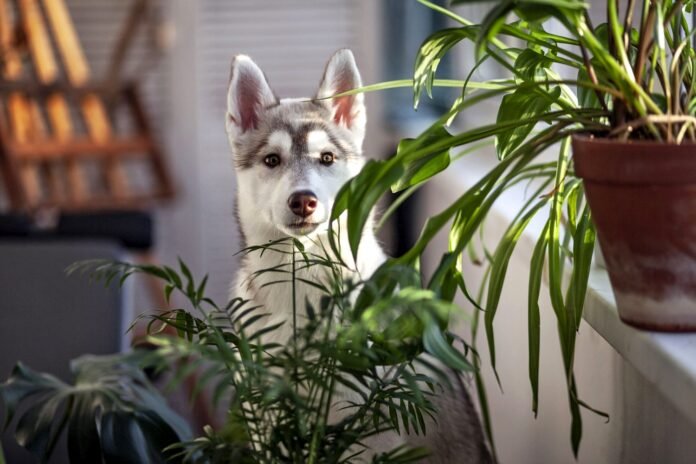As pet owners, we strive to provide our furry friends a safe and healthy environment. However, sometimes we may unknowingly expose them to toxic substances, including poisonous plants. Many typical household and garden plants are toxic to dogs and can cause severe health problems, even death if ingested. This article will discuss some of the most common poisonous plants for dogs and their potential effects.
Contents
Common Poisonous Plants for Dogs
- Azaleas and Rhododendrons
- Tulips and Hyacinths
- Daffodils
- Lilies
- Sago Palm
- Oleander
- Castor Bean
- Autumn Crocus
- Marijuana
- Ivy and Philodendron
- Chrysanthemums
- Foxglove
- Yew
- Aloe Vera
- Tomato Plants
Effects of Poisonous Plants on Dogs
- Digestive upset
- Vomiting and diarrhea
- Dehydration
- Abdominal pain
- Cardiovascular collapse
- Respiratory distress
- Seizures and convulsions
- Kidney or liver failure
- Death
Treatment for Plant Poisoning in Dogs
- Immediate removal of the plant
- Inducing vomiting
- Activated charcoal
- Intravenous fluids
- Medications for symptoms
- Hospitalization for monitoring and treatment
Preventing Plant Poisoning in Dogs
- Identifying and removing poisonous plants from the environment
- Keeping dogs away from garden areas
- Using non-toxic alternatives in landscaping
- Training dogs to avoid eating plants
- Providing a safe and secure environment for pets
Read More: Plants That Are Toxic to Cats
Some Important FAQs
How can I identify poisonous plants in my garden?
You can consult a local nursery or use online resources for a comprehensive list of toxic plants. Look for plants with bright colors, distinctive odors, or unusual growth patterns.
What should I do if my dog ingests a poisonous plant?
Immediately remove the plant and contact your veterinarian for further instructions. In some cases, inducing vomiting or administering activated charcoal may be necessary.
Can indoor plants be poisonous to dogs?
Many indoor plants, including ivy and philodendron, can be toxic to dogs. Keep them out of reach, or choose non-toxic alternatives.
How long does it take for symptoms of plant poisoning to appear in dogs?
The onset of symptoms can vary depending on the type of plant and the amount ingested. Some symptoms may appear within minutes, while others may take hours or days.
Are all parts of a plant toxic to dogs?
No, only certain parts of a plant may be toxic to dogs. For example, the leaves of a plant may be poisonous, while the flowers are not. It is essential to research each specific plant for its poisonous components.
Conclusion
Pet owners need to be aware of the common poisonous plants for dogs and take necessary precautions to protect their furry friends from harm. Identifying and removing toxic plants from the environment, keeping dogs away from garden areas, and providing a safe and secure environment are some measures to prevent plant poisoning in dogs. Remember to seek immediate veterinary attention if you suspect your dog has ingested a poisonous plant.




















